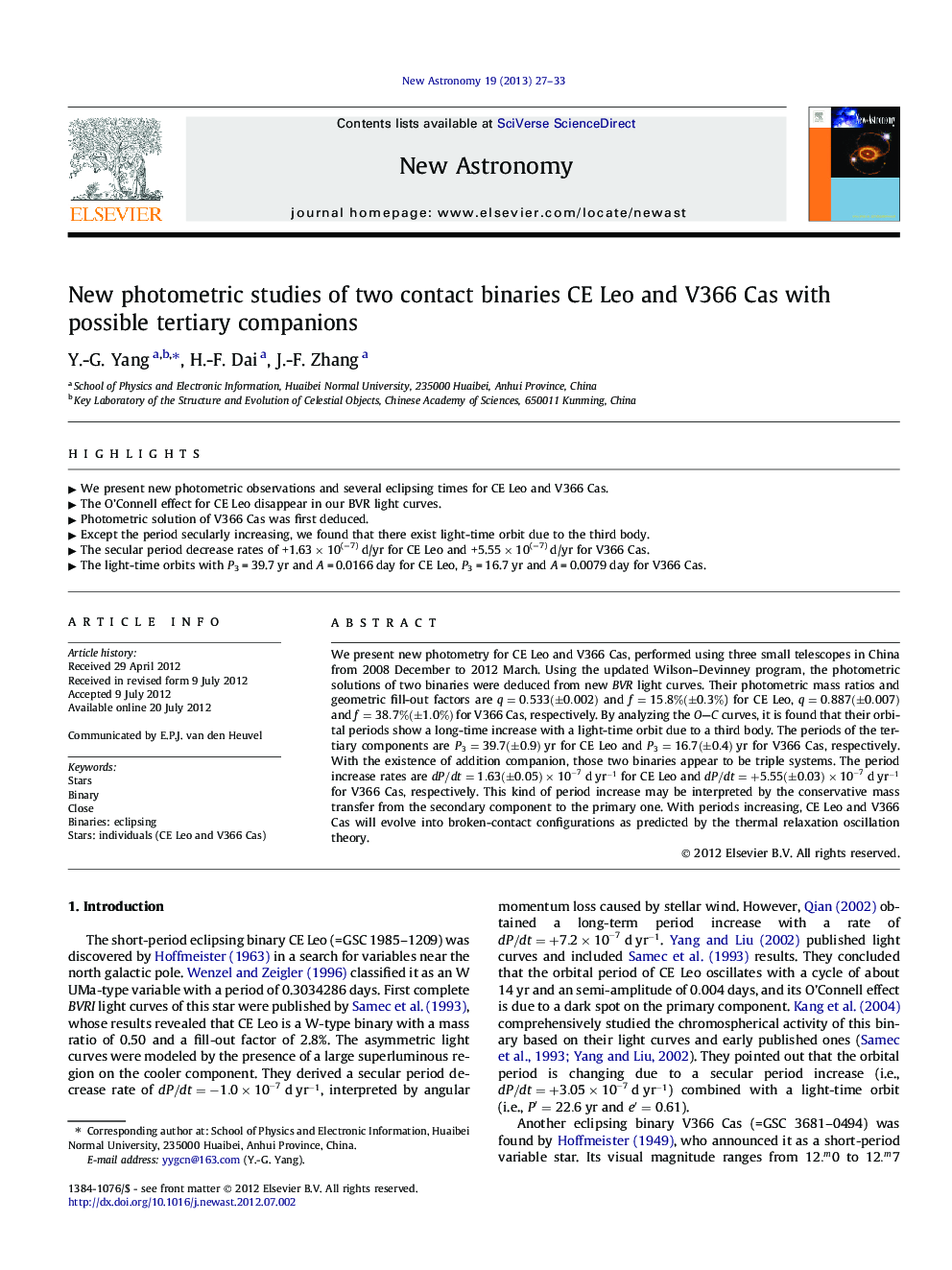| کد مقاله | کد نشریه | سال انتشار | مقاله انگلیسی | نسخه تمام متن |
|---|---|---|---|---|
| 1779118 | 1523758 | 2013 | 7 صفحه PDF | دانلود رایگان |

We present new photometry for CE Leo and V366 Cas, performed using three small telescopes in China from 2008 December to 2012 March. Using the updated Wilson–Devinney program, the photometric solutions of two binaries were deduced from new BVR light curves. Their photometric mass ratios and geometric fill-out factors are q=0.533(±0.002)q=0.533(±0.002) and f=15.8%(±0.3%f=15.8%(±0.3%) for CE Leo, q=0.887(±0.007)q=0.887(±0.007) and f=38.7%(±1.0%)f=38.7%(±1.0%) for V366 Cas, respectively. By analyzing the O–CO–C curves, it is found that their orbital periods show a long-time increase with a light-time orbit due to a third body. The periods of the tertiary components are P3=39.7(±0.9)yr for CE Leo and P3=16.7(±0.4)yr for V366 Cas, respectively. With the existence of addition companion, those two binaries appear to be triple systems. The period increase rates are dP/dt=1.63(±0.05)×10-7dyr-1 for CE Leo and dP/dt=+5.55(±0.03)×10-7dyr-1 for V366 Cas, respectively. This kind of period increase may be interpreted by the conservative mass transfer from the secondary component to the primary one. With periods increasing, CE Leo and V366 Cas will evolve into broken-contact configurations as predicted by the thermal relaxation oscillation theory.
► We present new photometric observations and several eclipsing times for CE Leo and V366 Cas.
► The O’Connell effect for CE Leo disappear in our BVR light curves.
► Photometric solution of V366 Cas was first deduced.
► Except the period secularly increasing, we found that there exist light-time orbit due to the third body.
► The secular period decrease rates of +1.63 × 10(−7) d/yr for CE Leo and +5.55 × 10(−7) d/yr for V366 Cas.
► The light-time orbits with P3 = 39.7 yr and A = 0.0166 day for CE Leo, P3 = 16.7 yr and A = 0.0079 day for V366 Cas.
Journal: New Astronomy - Volume 19, February 2013, Pages 27–33